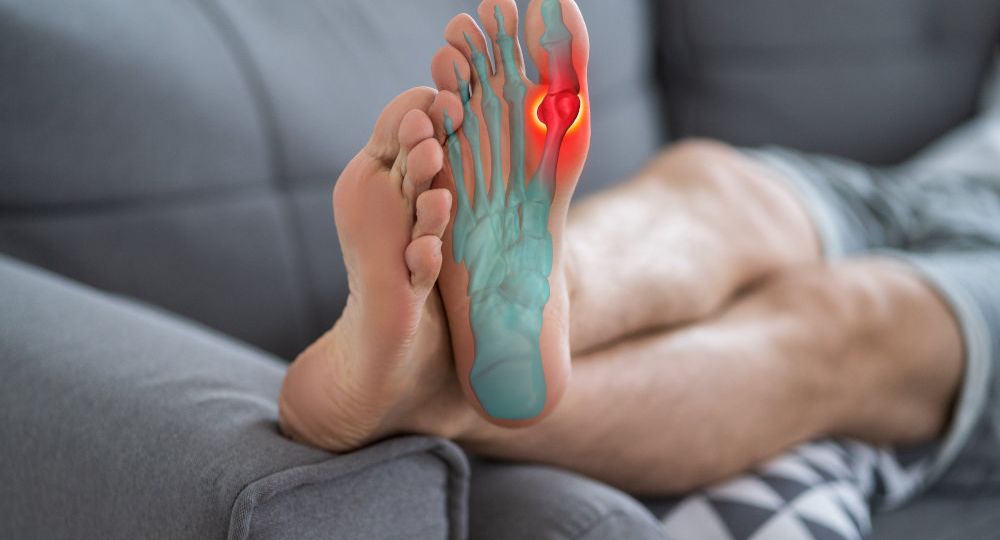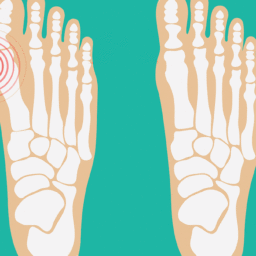
Did you know that arthritis in the bunion or big toe joint is the most common type of arthritis associated with the foot? It’s true. Arthritis of the big toe, also called turn toe or stiff big toe, is characterized by pain in the big toe. Many find pain relief through nonsurgical solutions, like better-fitted shoes and avoiding high heels.
However, those who have symptoms of big toe pain that interfere with daily life may need surgical treatment. This is a permanent solution to relieve pain and increase range of motion.
What Is Arthritis in the Bunion Joint?
Hallux rigidus refers to a stiff big toe, which is also the most common symptom of patients who suffer from this disorder. Big toe arthritis is a form of degenerative arthritis, which is the most commonly seen type of arthritis.
Those with arthritis of the bunion joint may experience stiffness and pain in the metatarsophalangeal joint. This is the joint space where the largest toes reach the foot.
Hallux rigidus is considered a progressive medical condition. This essentially means it gets worse as time goes on. Some will not experience much exacerbation of the issue, but many will find the stiffness and pain get worse and less motion is available in the joint.
What’s the Difference Between Hallux Rigidus and Hallux Valgus?
It can be a bit confusing to determine the difference between hallux valgus and hallux rigidus for the average person. Both are associated with disorders located in the big toe.
Hallux valgus is the presence of bunions and is most common, while the second most common is arthritis in the bunion joint.
Common Causes of Bunion Joint Arthritis
There isn’t always a clear cause of hallux rigidus. It’s often the result of toe joint stress through walking. When you take a step, twice your weight in force is placed on the joint of the toe. Some other causes of this medical condition include:
- Inflammatory conditions like gout or rheumatoid arthritis
- Overuse of the toe joint, such as athletes who stress the joint or workers who squat and stoop
- Osteoarthritis, which causes inflammation based on joint wear and tear
- Injuries like spraining a joint or stubbing the toe
- Genetics, as the condition may run in the family
Symptoms Related to Bunion Joint Arthritis
Joint pain in the toe is the most common symptom, which often gets worse when pushing off as you walk. For a worsening condition, symptoms can include:
- Decreased toe motion that creates pain when standing or walking
- Stiffness or pain that escalates in damp, cold weather
- An inflamed or swollen toe joint
- A bump, such as a callus or a bunion, develops on the top of the foot and makes wearing shoes less comfortable
Proper Diagnosis of Hallux Rigidus
One of the main things that a podiatrist will do to diagnose this condition is to test the range of motion of the toe joint. How far the toe bends up and down may also be tested. X-rays may be taken to look for a bone spur or other abnormalities.
Treatment Options for Arthritis in the Bunion Joint
There are several nonsurgical options for relieving the pain of hallux rigidus. The podiatrist may recommend you choose shoes with lots of room for your toes. Stiff-soled shoes can also relieve the pain. High heels will make it worse.
Adding pads to the shoe can prevent your toe from moving as much. Avoiding activities like jogging that stress the joint can also help. Anti-inflammatory medications may be recommended to reduce swelling and reduce pain.
Foot soaks that switch between cold and hot water can also help with inflammation. Try using hot water for about 30 seconds before switching directly to cold water for the next 30 seconds.
Another treatment option involves having corticosteroid injections to relieve any pain you are experiencing.
Surgical Options for Hallux Rigidus
In some cases, surgery will be needed. This is most common if the above remedies don’t alleviate stiffness and pain. There are several different surgical procedures that may be used for hallux rigidus. Shaving the bone spur or cutting the bone are two common choices.
Arthroplasty may be used for joint resurfacing in young patients. Arthrodesis is used for the most severe cases. The damaged cartilage is removed and the bones are joined. This is permanent but can restrict the movement of the toe.
Final Thoughts
If you are dealing with symptoms of hallux rigidus, an experienced podiatrist can help with the problem. The sooner you visit a medical professional, the better the outcome. Minimal treatment may be all that is needed with diagnosed quickly. With over 20 locations across the South East and West Coast of Florida, Certified Foot and Ankle Specialists will be able to provide a convenient location when searching for a certified foot doctor. Convenient locations in Jupiter, West Plam Beach, Weston and Vero Beach.



